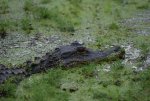AllTerrainAngler
Senior Member
I recently decided to get into photography to kill time in the off season. I picked up a nikon d3400 and so far I love it but I'm not that great at adjusting things for different conditions yet. I have multiple photo and video editing programs so it helps but I'd love some pointers on how to set it for various situations like overcast skies, moving targets(ducks, turkey, etc.), moving water. I have searched online and most sites require a subscription.


